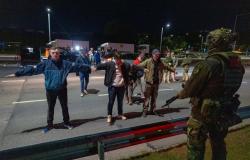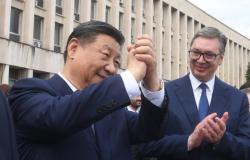Only buses, trolleybuses and service vehicles will be allowed on this section. Pedestrian and cyclist traffic will not be changed due to the ongoing reconstruction.
The traffic restrictions may cause congestion on the surrounding streets, especially in the first days of the traffic changes. We encourage drivers to plan their trips with plenty of time and choose alternative routes if possible. Public transport may also be delayed: bus routes 1G, 2G, 1, 3, 4, 13, 23, 41, 42, 53, 54, 78 and 89 and 1, 2, 7, 15, 16 may be affected by the restrictions. and timetables of trolleybuses for 20 routes.
How to bypass the traffic restriction zone?
Traffic regulators will work at the approaches to the section of V. Šopenas Street, where restrictions are introduced, who will direct vehicles to the adjacent streets. However, we recommend that drivers choose alternative routes earlier:
-
For those going in the east direction (towards the station, Drujos St., etc.), we recommend driving along Mindaugas, Paneriu, Algirdas and Geležinkelis streets.
-
For those traveling in the western direction (towards Kaunas St., Western Bypass, etc.), we recommend driving around the station ring, Geležinkelios and Švitrigailos streets.
-
For those who want to reach Halė market or Pylimo street from Kaunas street, we recommend going through Švitrigaila, Pelesa, Liepkalnis, Aušras Vartų and Bazilijonų streets.
Reconstruction of the heating circuit – prevention of unforeseen inconveniences
Centrally supplied heat reaches residents through pipelines with a total length of 760 kilometers in Vilnius. The average age of pipelines is more than 30 years, and in the case of V. Šopenas Street, the infrastructure is even older, reaching more than fifty years.
During this time, pipelines naturally wear out, are affected by corrosion, and various types of defects, such as cracks, are formed. Old, inefficient and worn sections of heat routes pose the risk of accidents during the heating season and do not ensure reliable and efficient heat supply. Leaky and old pipelines contribute to the greenhouse effect and greater heat loss to the environment. For these reasons, Vilnius constantly invests in the renewal and modernization of pipeline infrastructure, ensuring that centralized heat reaches residents efficiently and reliably.






